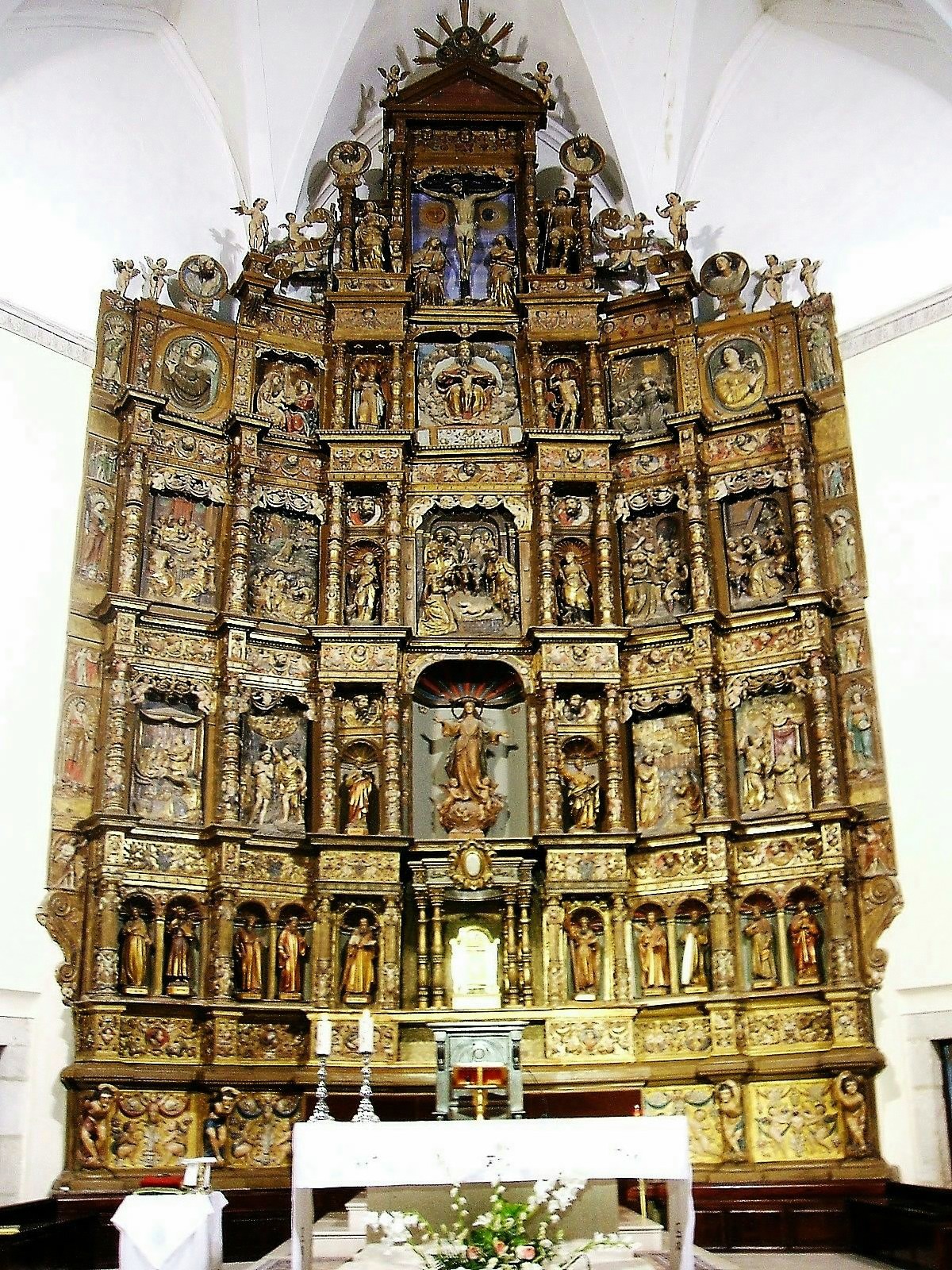Portico Altar of St. Gregory the Great, St. Peter's Basilica, Rome, Italy
Retable, Church of Our Lady of the Assumption, Cuenca, Spain
The retable or "retablo" originates from the Latin word retrotabulum which translates to "behind the altar table". It's a framed altarpiece that is similar to an Italian Baroque portico altar, but with some major differences. The portico altar integrates decorative elements like sculpture, relief, and fresco into the backdrop of the altar to create an effect of a seemingly singular surface. On the other hand, the Spanish Baroque retables separate the frescos, sculptures, and reliefs into what appears to be a vertical grid or frame; it makes no attempt to dissolve the boundaries between each. And while the retable and altar serve as the main altar space, the portico altar that is a complementary worship area in a typical Italian Baroque church.
Retable, St. Mary's Cathedral of Astorga, Leon, Spain
The impressiveness of the retable has to do with the size. Characteristically, it is much higher than it is broad which accentuates its height. The piece sits on the ground and extends to the vault above drawing your attention from the bottom-up; the Brobdingnagian size combined with the heavy decoration overwhelm the viewer when it is first seen. The structure is constructed from wood or stone Various professions were employed to create the retable including painters, sculptors, polychromers (someone who practices the decorating of architectural elements, sculpture, etc. in a variety of colors), and guilders.
Paintings done in tempera on the retable, St. Peter's church, Girona, Spain
The paintings are done in tempera are situated under carved and gilded canopies that add depth to the structure. The art depicts the life of a saint or perhaps the stories of Jesus. In all paintings, the figure dominates leaving the backdrop and scenery secondary to the actual objects. The brightly painted colors contrast with the heavy gold setting found throughout the retable.
Sources:
Baroque and Rococo Art and Architecture / Robert Neuman
www.metmuseum.org/pubs/bulletins/1/pdf/3255396.pdf.bannered.pdf
http://en.wikipedia.org/wiki/Retable


+CATEDRAL+RETABLO+DEL+ALTAR+MAYOR+DE+gASPAR+BECERRA+MANIERISTA+S.XVI.jpg)









